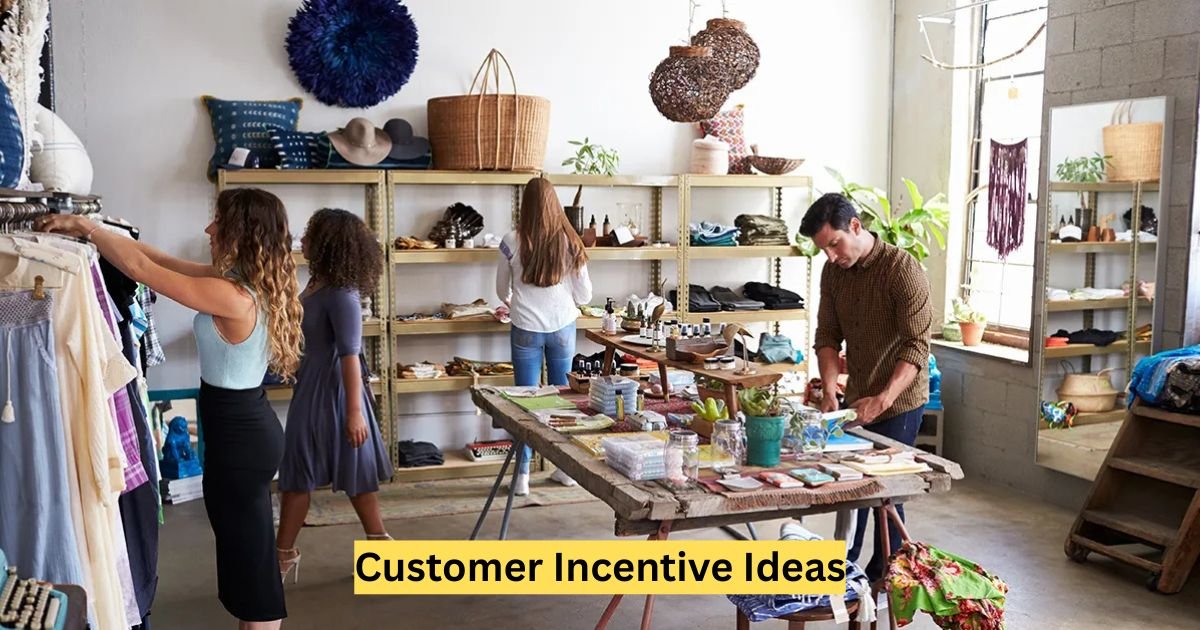In today’s competitive market, keeping customers engaged and loyal is more challenging than ever. Customer incentive programs are a proven way to encourage repeat business, increase sales, and build long-lasting relationships. But what exactly are customer incentives, and how can businesses implement them effectively? This article explores creative and data-driven customer incentive ideas, practical tips, and real-world examples to help you craft a strategy that resonates with your audience.
What Are Customer Incentives?
Customer incentives are rewards or benefits offered to customers to motivate specific actions, such as making a purchase, referring a friend, or leaving a review. These incentives can take many forms, from discounts to exclusive experiences, and are designed to enhance customer satisfaction and loyalty.
Key Stat: According to a 2023 study by McKinsey, 78% of consumers are more likely to shop with brands that offer personalized incentives.
Why Are Customer Incentives Important?
Incentives aren’t just about giving something away—they’re about creating value. They help businesses:
-
Increase retention: Loyal customers spend 67% more than new ones (Bain & Company).
-
Drive word-of-mouth marketing: Referred customers have a 37% higher retention rate (Harvard Business Review).
-
Boost engagement: Incentivized customers are 50% more likely to engage with a brand (Forrester).
Now, let’s dive into some creative customer incentive ideas that can set your business apart.
Creative Customer Incentive Ideas for Your Business
1. Loyalty Programs That Reward Repeat Purchases
Loyalty programs are a cornerstone of customer retention. By rewarding customers for every purchase, you encourage them to keep coming back.
-
How it works: Offer points for each dollar spent, which can be redeemed for discounts, free products, or exclusive perks.
-
Example: Starbucks’ Rewards program allows customers to earn stars for purchases, redeemable for free drinks or food. In 2024, Starbucks reported a 13% increase in loyalty program membership.
-
Tip: Gamify your loyalty program with tiers (e.g., Silver, Gold, Platinum) to create a sense of achievement.
LSI Keywords: customer loyalty programs, reward points system, gamified loyalty.
2. Referral Programs to Tap Into Word-of-Mouth
Referral programs incentivize customers to recommend your business to friends and family, turning them into brand advocates.
-
How it works: Offer a reward (e.g., discount, gift card) to both the referrer and the referred customer.
-
Example: Dropbox’s referral program offered extra storage space for both parties, leading to a 60% increase in sign-ups.
-
Tip: Make the referral process seamless with unique links or codes shared via email or social media.
Long-Tail Keyword: best customer referral program ideas.
3. Exclusive Discounts for First-Time Buyers
First impressions matter. Offering a discount to new customers can entice them to make their first purchase.
-
How it works: Provide a percentage off or a free gift with the first order.
-
Example: Warby Parker offers a 15% discount for first-time buyers who sign up for their newsletter.
-
Tip: Use pop-ups or email campaigns to promote the offer without overwhelming the user experience.
Question-Based Subheading: How can I attract new customers with incentives?
Answer for Featured Snippet: To attract new customers, offer exclusive discounts like 10-20% off their first purchase or a free gift with a minimum spend. Pair this with a user-friendly sign-up process to maximize conversions.
4. Seasonal or Event-Based Promotions
Tap into holidays, anniversaries, or special events to create timely incentives that drive urgency.
-
How it works: Offer limited-time discounts, free shipping, or bundled deals during specific periods.
-
Example: Amazon’s Prime Day offers exclusive deals to Prime members, generating billions in sales annually.
-
Tip: Use countdown timers on your website to create a sense of urgency.
LSI Keywords: seasonal promotions, limited-time offers, holiday discounts.
5. Personalized Offers Based on Customer Behavior
Personalization is key to making customers feel valued. Use data to tailor incentives to individual preferences.
-
How it works: Analyze purchase history or browsing behavior to offer relevant discounts or product recommendations.
-
Example: Sephora’s Beauty Insider program sends personalized product offers based on past purchases, boosting engagement by 30%.
-
Tip: Invest in CRM tools to track customer data and automate personalized campaigns.
Long-Tail Keyword: personalized customer incentive strategies.
6. Free Samples or Trials to Build Trust
Offering free samples or trials reduces the risk for customers and encourages them to try your products or services.
-
How it works: Provide a small sample or a limited-time trial with no commitment.
-
Example: HelloFresh offers a free meal box to new subscribers, leading to a 25% conversion rate to paid plans.
-
Tip: Follow up with a discount offer to convert trial users into paying customers.
Question-Based Subheading: Why do free samples work as customer incentives?
Answer for Featured Snippet: Free samples work because they lower the barrier to entry, build trust, and allow customers to experience your product firsthand, increasing the likelihood of a purchase.
7. Social Media Contests and Giveaways
Engage your audience on social platforms with contests or giveaways that reward participation.
-
How it works: Ask customers to share a post, tag friends, or create user-generated content for a chance to win a prize.
-
Example: Gymshark’s #Gymshark66 challenge encourages users to post fitness goals for a chance to win gear, driving millions of impressions.
-
Tip: Keep entry requirements simple to maximize participation.
LSI Keywords: social media giveaways, customer engagement contests.
8. VIP Experiences for Top Customers
Reward your most loyal customers with exclusive experiences that make them feel special.
-
How it works: Offer access to private events, early product launches, or one-on-one consultations.
-
Example: American Express’s Platinum Card offers VIP access to concerts and events, enhancing customer loyalty.
-
Tip: Use tiered rewards to motivate customers to spend more to unlock VIP perks.
Long-Tail Keyword: exclusive customer reward experiences.
How to Implement a Successful Customer Incentive Program
Creating an effective incentive program requires strategy and execution. Here are some practical tips:
-
Know your audience: Use surveys or analytics to understand what motivates your customers.
-
Keep it simple: Complex rules or redemption processes can deter participation.
-
Measure results: Track metrics like redemption rates, customer retention, and ROI to optimize your program.
-
Promote consistently: Use email, social media, and your website to remind customers about available incentives.
-
Stay compliant: Ensure your program adheres to local regulations, especially for contests or giveaways.
Stat: Businesses with well-structured incentive programs see a 20% increase in customer lifetime value (Forrester).
Common Mistakes to Avoid
-
Overcomplicating rewards: If customers need a manual to understand your program, they’ll lose interest.
-
Ignoring small spenders: Focus on inclusivity to engage all customers, not just high rollers.
-
Neglecting communication: Failing to promote your incentives can lead to low participation.
See Also: top10ideas.org
Conclusion
Customer incentives are more than just perks—they’re a powerful tool to build loyalty, drive sales, and create memorable experiences. Whether you opt for a loyalty program, personalized offers, or social media giveaways, the key is to align your incentives with your customers’ needs and preferences. By implementing the ideas in this article, you can turn one-time buyers into lifelong advocates.




